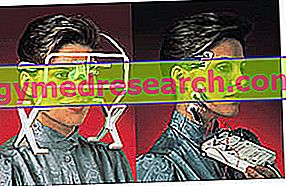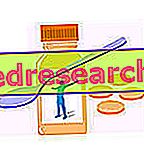Related articles: Pediculosis
Definition
Pediculosis is a skin infestation caused by lice, small insects that act as parasites. Lice feed on human blood and proliferate between hair and hair, on which they move easily thanks to the hooks placed on their legs.
Head lice are transmitted from person to person by close contact or by sharing combs, brushes and hats. The infestation affects the hair and scalp, but the eyebrows, eyelashes and beard can also be affected. The pediculosis of the head is found above all among the children who attend kindergarten and elementary school.
Body lice live primarily in clothing and not on people; they are transmitted in overcrowded conditions by sharing contaminated clothes and sheets.
Pubic lice, on the other hand, are transmitted via sexual contact or sharing towels and linen.
The symptoms, diagnosis and treatment differ according to the site of infestation.
Most common symptoms and signs *
- Burning eyes
- Skin discoloration
- Swollen lymph nodes
- macules
- Urticaria
- wheals
- itch
- Itching in the head
Further indications
Lice infestation, in general, is manifested by irritation and intense itching. This reaction is caused by the saliva that lice inject into the skin while they are feeding.
Furthermore, pediculosis of the head can cause scalp excoriations and local swollen lymph nodes. A thorough inspection of the scalp is sufficient to identify it; lice are usually found on the nape of the neck and behind the ears. The eggs laid by the louse (nits) are ovoid, greyish-white, about 1 mm in diameter and firmly adhered to the base of the hair shaft: for this characteristic they can be differentiated from dandruff which, on the contrary, is eliminated with a breath or with a slight manual departure.
To determine how long the infestation has been going on, it is possible to measure how far the eggs have moved away from the scalp (eg nits located at a distance of 7-10 mm from the scalp, they have been laid 15-20 days before) .
Body lice cause small red bites due to bites, usually associated with urticarial wheals or superficial bacterial infection due to excessive scratching. The lesions are observed mainly at the level of the shoulders, buttocks and abdomen.
The diagnosis is formulated based on the demonstration of lice and nits in clothing, especially at the level of the seams; the nits may be present on the body hair.
Pubic lice almost always infect pubic and perianal hair. Some patients have excoriation, regional lymphadenopathy and small localized infections. An infrequent sign, but characteristic of the infestation, is the appearance of bluish-gray macules (cerulean macules) on the abdomen, on the trunk and on the thighs. These macules are due to the action of the salivary secretion injected during the meal of the parasite. Another sign in support of pediculosis is the dissemination of feces emitted by rust-dark brown lice, similar to punctual masses, on the skin or on underwear. The diagnosis is formulated with the demonstration of nits and / or lice at close inspection with Wood's lamp or with a microscope examination.
In the case of ascertained pediculosis, recourse to pediculocyte products is indicated. The treatments available are effective, but it is important to act quickly.
On the market, aspergibili powders, mousses, shampoos, lotions, gels or sprays are available. The active ingredients contained in these products are mainly:
- malathion, belonging to the organophosphorus class, causes the respiratory paralysis of the louse;
- Pyrethrum extract or synthetic pyrethroids (such as tetramethrin, permethrin and phenotrine) behave as occlusive agents and kill lice by suffocation
These alternatives can be used in association with the accurate mechanical removal of nits, using a comb with non-deformable and dense teeth capable of dragging the killed eggs and lice along the hair. The disappearance of live nits (viable) is important to prevent re-infestations.
A simple method for prevention consists in washing sheets and clothing at a temperature above 60 ° C, and in immersing combs and brushes in hot water.



